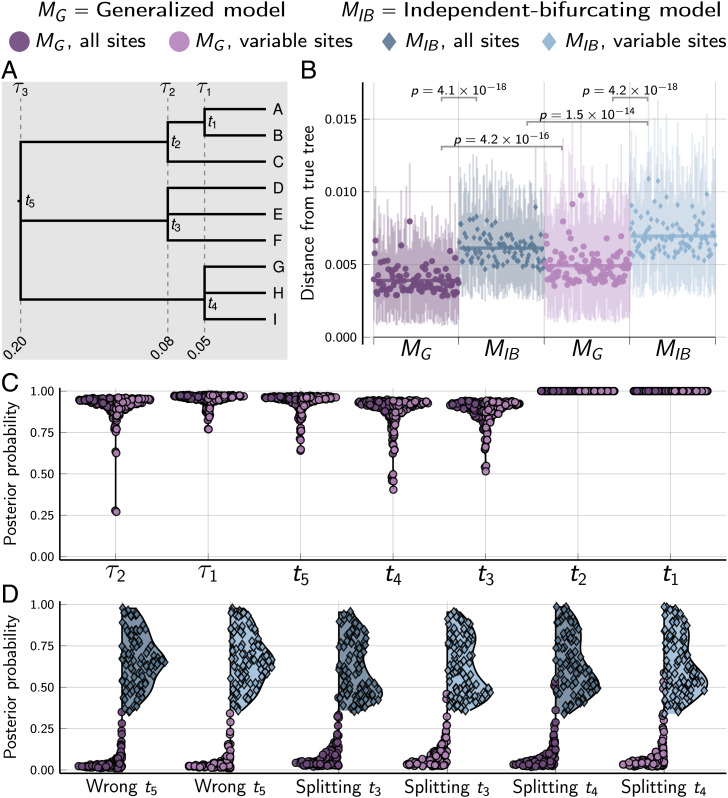Fig. 2.
Results of analyses of 100 datasets, each with 50,000 biallelic characters simulated on the species tree shown in A with divergence times in units of expected substitutions per site. (B) The square root of the sum of squared differences in branch lengths between the true tree and each posterior tree sample (46); the point and bars represent the posterior mean and equal-tailed 95% credible interval, respectively. P values are shown for Wilcoxon signed-rank tests (47) comparing the paired differences in tree distances between methods. (C) Violin plots of the posterior probabilities of each node and shared divergence in the true tree across the 100 simulated datasets. (D) Violin plots of the most probable incorrect root node and most probable of the three incorrect splittings of the t3 and t4 multifurcations. For each simulation, the mutation-scaled effective population size () was drawn from a gamma distribution (shape = 20, mean = 0.001) and shared across all the branches of the tree; this distribution was used as the prior in analyses. Tree was plotted by using Gram [v4.0.0, Commit 02286362 (35)] and the P4 phylogenetic toolkit [v1.4, Commit d9c8d1b1 (36)]. Other plots were created by using the PGFPlotsX [v1.2.10, Commit 1adde3d0 (48)] backend of the Plots [v1.5.7, Commit f80ce6a2 (49)] package in Julia [v1.5.4 (50)].

